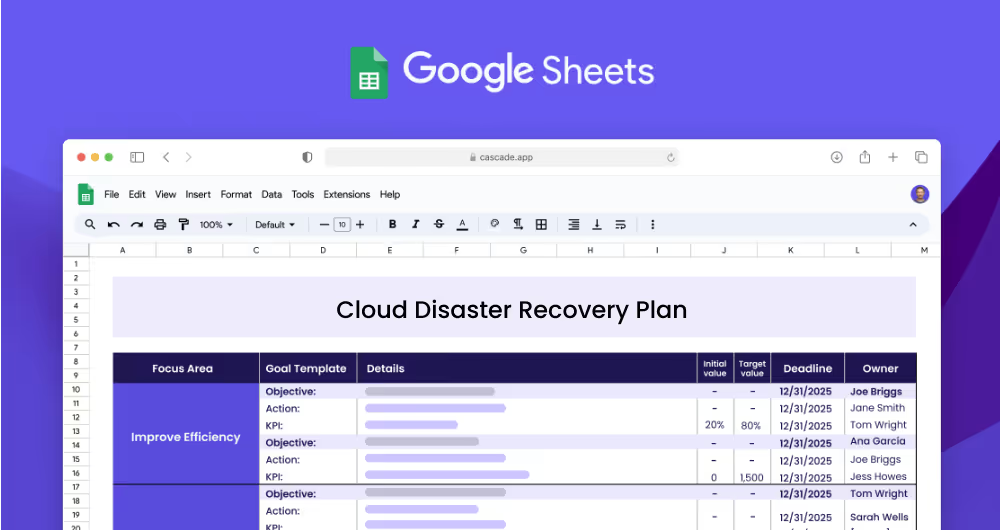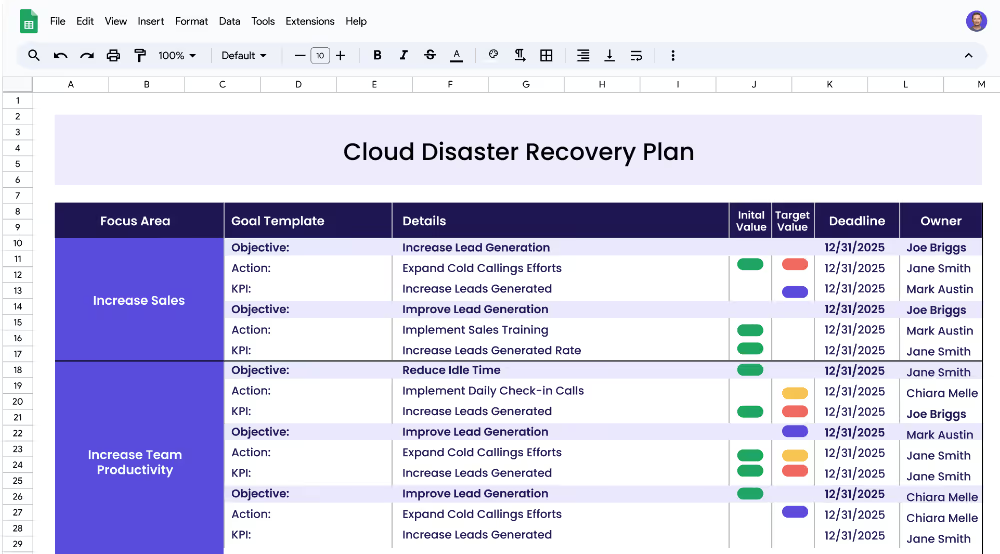A cloud disaster recovery plan is a strategy for responding to and recovering from a cloud-based disaster. This plan covers all facets of the disaster, from the initial response to the restoration of data, services, and applications. The goal is to ensure the continuity of operations and that all data, services, and applications are restored as quickly and cost-effectively as possible.
Each focus area has its own objectives, projects, and KPIs to ensure that the strategy is comprehensive and effective.
This Cloud Disaster Recovery Plan template is for IT leaders and teams in organizations across industries who want to create a plan to effectively recover from cloud-based disasters. This template will help you identify and document Recovery Point Objectives and Recovery Time Objectives, and develop a plan to address potential disasters and their recoveries.
When creating your Cloud Disaster Recovery Plan, it’s important to define clear focus areas. Focus areas are sections of the plan that discuss specific areas of the plan in detail. Examples of focus areas include Cloud Disaster Recovery, Cloud Backup and Recovery, and Test Cloud Disaster Recovery Plan.
When defining your focus areas, it’s important to think about the objectives that could fall under that focus area. Objectives are specific goals that should be achieved to reach the overall plan goals. Examples of objectives include Establish Recovery Time and Recovery Point Objectives, Create Cloud Disaster Recovery Plan, and Identify Backup and Recovery Requirements.
Once you have identified objectives, it's important to set measurable targets, also known as KPIs. These targets help you measure progress and ensure that the plan is being implemented effectively. Examples of KPIs include Achieve Recovery Time Objectives, Implement cloud disaster recovery plan, and Establish Backup Windows.
Once you have identified and set goals, it’s time to implement related projects to achieve the KPIs. These projects are the actions needed to reach the goals. Examples of projects include Identify and document Recovery Point Objectives and Recovery Time Objectives, Develop a cloud disaster recovery plan to address potential disasters and their recoveries, and Determine data recovery requirements, backup windows, and other key recovery metrics.
If you're looking to expedite your strategy and enhance your organizational resilience, Cascade Strategy Execution Software provides a superior alternative to traditional spreadsheets. Cascade offers real-time updates, centralized collaboration, and automated reporting—essential tools for maintaining visibility and alignment even in crisis scenarios. In comparison to spreadsheets, which can become overwhelming and erroneous under complex and demanding conditions, Cascade secures and scales your strategic planning and execution effortlessly. Sign-up for free or book a demo with one of our strategy experts to discover how we can support your strategies more effectively.


